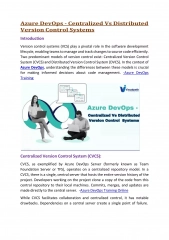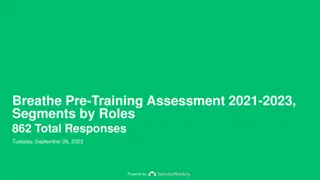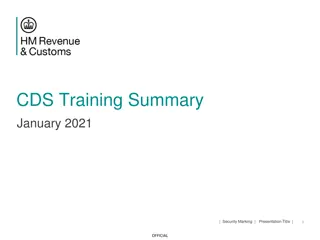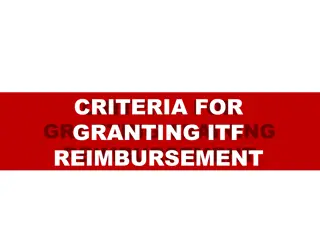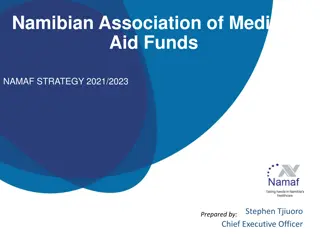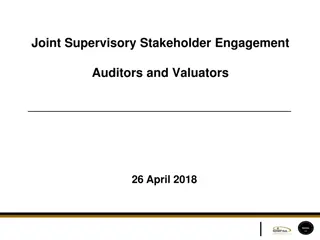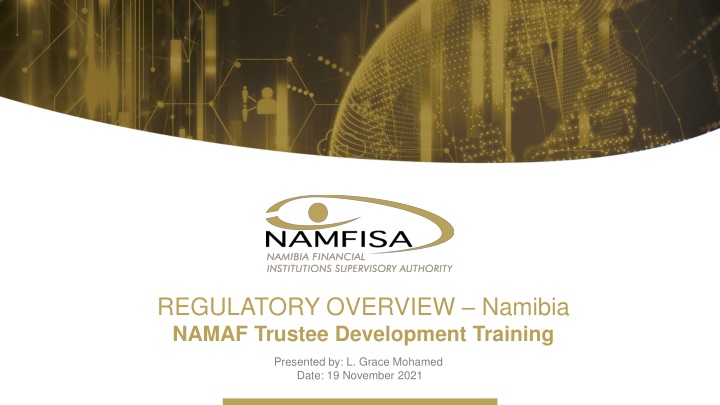
Namibia's Regulatory Landscape: Current Framework, Challenges, and Reforms
Explore Namibia's current regulatory framework for financial institutions, including long-term insurance, micro-lenders, and medical aid funds. Discover the challenges facing the non-banking financial sector, legislative reforms proposed by NAMFISA, and the status of the Financial Institutions and Markets Act. Stay informed on the latest developments shaping Namibia's regulatory environment.
Download Presentation

Please find below an Image/Link to download the presentation.
The content on the website is provided AS IS for your information and personal use only. It may not be sold, licensed, or shared on other websites without obtaining consent from the author. If you encounter any issues during the download, it is possible that the publisher has removed the file from their server.
You are allowed to download the files provided on this website for personal or commercial use, subject to the condition that they are used lawfully. All files are the property of their respective owners.
The content on the website is provided AS IS for your information and personal use only. It may not be sold, licensed, or shared on other websites without obtaining consent from the author.
E N D
Presentation Transcript
REGULATORY OVERVIEW Namibia NAMAF Trustee Development Training Presented by: L. Grace Mohamed Date: 19 November 2021
OUTLINE Introduction Current Regulatory framework and challenges Framework Challenges FIM Act Proposed Legislative Reform Status Changes - Chapter 7 (Medical Aid Funds) Conclusion
Current Regulatory framework //- Regulatory Framework Long-term Insurance (1998) Short-term Insurance (1998) Micro Lenders (Usury) (1968) Medical Aid Funds - 7 (1995 Act) Accountants & Auditors (1951 Act) NAMFISA (2001) Participation Bonds (1981 Act) Pension Funds (1956 Act) Stock Exchange (1985 Act) Friendly Societies (1956 Act) Unit Trusts (1981 Act)
Current Regulatory framework and challenges //- Challenges Non-Banking Financial Institutions (NBFI) sector deficiencies:- Outdated current legislative framework for regulation and supervision; Relies on a compliance driven approach to supervision (approaches to supervision have evolved over the last 50 years); Does not provide adequate supervisory and enforcement powers and tools; The Board of NAMFISA is an administrative board and has no regulatory functions; The regulatory measures are fragmented, inconsistent and exacerbate the cost of regulation; Does not consider changed circumstances and does not encourage innovation and entrepreneurship; Does not recognize the inter-linkages within the financial sector, locally, regionally and internationally; and The current mandate does not explicitly include consumer education and financial stability.
Legislative reforms //- New Legislation NAMFISA crafted sound legislation to curb the challenges and restore market efficiency namely:- Financial Institutions and Markets Act (FIM Act) Industry consolidated legislation NAMFISA Act Microlending Act Financial Services Adjudicator Bill Standards Regulations
Legislative reforms //- Status Status: FIM and NAMFISA promulgated, Government Gazette on 1 October 2021. FIM Act - supported by subordinate legislations: Regulations and Standards. Encourage to study Regulations and Standards before Gazetting (28 Feb 2022).
Current Regulatory framework //- MAF Specific Challenges The current MAF Act did not adequately address all provisions and omitted key aspects inclusive of: Registration Of Financial Institutions And Financial Intermediaries Fund Administrators And Services Medical Aid Fund Broker And Services Board Governance Payment Of Contributions Rules And Rule Amendments Fund Administrators And Services Waiting Periods Insurance Of Liabilities Voluntary Dissolution Of A Medical Aid Fund Investments
Proposed Legislative reforms //- MAF Changes Medical Aid Funds Act Chapter 7 of FIM Act Registration of Financial Institutions and Financial Intermediaries Conditional registration of Financial Institutions and Financial Intermediaries. Registration conditions set Powers not to register or vary such conditions of registration if it so deem appropriate, with reasons Fund administrators required to be registered. Supervision and regulation by NAMFISA Prescribed administration services Medical Aid Fund Brokers (and services) to be registered To increase the coverage and distribution of Medical Aid Funds across Namibia.
Proposed Legislative reforms //- MAF Changes Medical Aid Funds Act Chapter 7 of FIM Act Capital Standards Capital adequacy requirements set Risk Based capital adequacy amount, to be determined by the risk profile of an individual medical aid fund. To ensure that Medical Aid Funds remain financially sound all times. Board Governance To observe best corporate governance practices Specific governance Standard drafted
Proposed Legislative reforms //- MAF Changes Medical Aid Funds Act Chapter 7 of FIM Act Payment of Contributions Minimum information, in the form of prescribed standards, to be furnished to funds by the participating employer. Provisions for the period after which payment of subscriptions or contributions to a medical aid fund become due and late payment interests Waiting Periods Permission for medical aid funds to impose limited waiting periods on members joining a fund, with stringent periods for those who join funds without having belonged to one previously, or after a certain break in membership. To prevent members from joining a fund only when they are sick and need benefits (adverse/anti selection).
Proposed Legislative reforms //- MAF Changes Medical Aid Funds Act Chapter 7 of FIM Act Insurance of Liabilities Approval of any intention of a fund to purchase any insurance or reinsurance policy in respect of any health services or effect any amendment to an insurance or reinsurance contract must be approved by NAMFISA. To curb the reinsurance abuse by funds and other intermediaries who may use it to strip medical aid funds of funds. Rules and Rule Amendments No longer register or approve any rules or rule amendments. All rules and rule amendments must however be submitted to NAMFISA. NAMFISA may direct or cause for rules that are inconsistent with the FIM Act to be amended. NAMFISA will be able to influence benefit options and structures to ensure that members are treated fairly and receive value for their money. Funds will be required to provide member of the Fund with a copy of its rules and rule amendments, free of charge. Draft Standard on Rules
Proposed Legislative reforms //- MAF Changes Medical Aid Funds Act Chapter 7 of FIM Act Voluntary Dissolution of a Medical Aid Fund The FIM Act allows for wholly or partial dissolution of medical aid funds Subject to prescribed standards and approved rules. Investments Investment of medical aid fund assets, including limits of investments, guided by or prescribed in a regulation. To ensure that the medical aid funds assets are invested appropriately To support the objectives for which the medical aid funds have been established or are registered for.
Proposed Legislative reforms //- MAF Changes The FIM Act address prudential matters but advocate for issues of market conduct and governance. Under this reform NAMFISA has also undertaken to shift from compliance (or rule) based supervision to Risk Based Supervision (RBS). RBS is also the philosophy underpinning the current regulatory and supervisory reform for financial institutions that are regulated by NAMFISA. RBS will allow NAMFISA to focus its limited resources on the areas that pose the greatest risk to meeting regulatory objectives.
BREAK TIME Thank You Sed ut perspiciatis unde omnis iste natus error sit voluptatem accusantium doloremque laudantium, architecto. Nemo enim suscipit.





